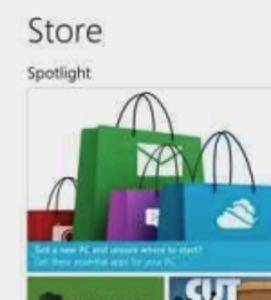Since last September, Microsoft has promised that the legal-ese in its Windows Store terms would be straightforward. Thus far, the company has lived up to that promise with an App Developer Agreement (ADA) and a set of certification requirements for Windows apps (Metro-style), both published yesterday.

But some ambiguities and open questions do remain, and a Microsoft spokesperson tells ReadWriteWeb this afternoon that this may be on purpose. The licensing terms the company released yesterday only apply to beta apps and contest entries submitted between now and February 3. During that period as well as the subsequent beta period, according to the current ADA, apps must be released for free, as the earliest date in which commercial transactions will commence is the day the Windows 8 Release Candidate is made available – and that date remains a secret.
For an app to be visible and downloadable through Microsoft’s Windows Store for Windows 8, it must be certified by the company. This according to the App Developer Agreement released yesterday, and we can expect this rule not to change. The rule means a certified app is by definition a “Metro-style” app, using the new Windows Runtime (WinRT) library and APIs. The ADA gives prospective future publishers a generous taste of how it should expect to be treated once the store goes commercial.
But as a Microsoft spokesperson told RWW this afternoon, the terms being offered to developers today, especially for inclusion in the company’s First Apps Contest, are limited only to specific development periods. For now, we can assume the ADA cover the pre-beta period, which is based around the current Win8 Developer Preview and which ends in late February; and the Win8 beta period, which begins immediately thereafter. However, a built-in opportunity for Microsoft to make adjustments is at the start of the Win8 Release Candidate period, which is a milestone directly referenced in the current language of the App Developer Agreement.
“Since the current certification requirements are specifically designed for the beta period,” the spokesperson tells us, “it’s likely that when and if they change, they’ll essentially change to fit the next part of the product’s development cycle.” This was in response to our question about whether developers would be given notice of changes to terms, and whether they would be given a grace period to comply should those changes be extensive. The response indicates that changes to terms may be revealed when the milestone dates for future development cycles (such as Win8 RT) are announced.
A draft of the Standard Application License Terms for end users is attached to the end of the ADA. As these Terms currently read with respect to the end user’s installation and use rights for a published app, “The application may be removed from any devices onto which you have installed the Application, and any associated license rights will terminate upon such removal, no later than the next public release of Windows 8, which may be a Release Candidate release.” (Already there’s one change to make: Either capitalize the “A” in “Application” or don’t.)
Hidden details in the ADA and Cert Requirements
There’s no evidence that Microsoft is actively obfuscating terms in order to cover up advantages that it might later claim. This is important, especially for veteran iTunes publishers familiar with the famous “Section 3.3.1” clause of the Developers’ Agreement (dropped in September 2010) which specified that any program sold through iTunes must be “originally written” in Objective-C, C, C++, or JavaScript (for WebKit), and must compile against the iPhone OS APIs at that time.
Choice of tools and methods. Yet the fact that a Microsoft-certified “Windows app” is by definition a Metro-style app, according to the Certification Requirements, gives Windows Store one poignant similarity after all between iTunes circa 2009 and the Windows Store circa 2012: Metro apps that qualify for inclusion in Windows Store are bound to the new WinRT APIs – not to Flash and not to Silverlight.
By contrast, Microsoft is not claiming any authority over what tools developers must use to build their apps, which was the case with iTunes before Apple dropped Section 3.3.1. And in an important concession found in recently updated documentation, the DirectX graphics library may still be used by C++ developers to write Metro-style apps that generate content that graphics cards geared for DirectX may accelerate. Although C# and Visual Basic developers are encouraged to instead use the new XAML libraries for defining on-screen resources, Microsoft simply saying DirectX is permissible in certified Metro-style apps opens up a rich world of possibilities for games developers on the WinRT platform.
Users must be able to install five copies. The current draft of the Application License Terms grants users the right to install up to five copies of the app on “Windows 8 enabled devices that are affiliated with the Windows Live ID associated with your Windows Store account.” This gives a user plenty of opportunity to purchase an app once, and install it to her work PC, her home office PC, her media center PC, a laptop, and a tablet.
What’s also important here is the authentication mechanism: If you want to be a Windows 8 apps user, you need a Windows Live ID. This speaks to Microsoft’s intention to be the central identity provider for Windows users, giving others like Facebook and OpenID equal access but making sure Live ID gets the front door.
No Windows Store exclusivity. Microsoft, as should be expected, retains the right to revoke a developer’s Store account. But the reasons for doing so are limited to failing “to keep your account in good standing,” and thus far those reasons do not appear to include discovering that an app is available elsewhere (including on some other platform), and for some other price.
This was, and to some extent continues to be, a stickler for iOS app developers. Apple has since relaxed several of its exclusivity requirements, including that an app must originally be written for iPhone, and can only appear in the iTunes App Store. However, Apple has not relaxed its terms with respect to developers’ rights to publish elsewhere. Once an app appears there, from Apple’s point of view, “You agree not to distribute Your Application to third parties via other distribution methods or enable or permit others to do so.”
By stark contrast, Microsoft’s terms state that developers grant Microsoft the right to host, install, use, etc. the developers’ software in connection with the Store, but nowhere in that paragraph does the word “exclusive” appear. For now, Microsoft’s ADA also does not restrict a developer’s right to sell his app somewhere else (say, Amazon) for less than the sale price for the app on the Windows Store.
Allowances made for open source. One cue that Microsoft does take from Apple in its current prototype of the App Developer’s Agreement for Windows Store in Windows 8, concerns the permissions and restrictions the ADA grants with respect to open source licenses. Like Apple, Microsoft wants to avoid being constrained by someone else’s open source license, if it happens to govern some of the content of an app.
The ADA uses the familiar blanket term “FOSS” to apply to “free and open source” software. From there, it goes on: “If your app includes FOSS, you must comply with all applicable FOSS licensing terms, including any source availability requirements.” And later, “it must not cause any non-FOSS Microsoft software to become subject to the terms of any FOSS license.” These are sensible provisions that give the developer the responsibility of upholding her end of the bargain with respect to her existing FOSS license obligations to other parties.
Rejections will come with advice. One of the clearly stated requirements in the ADA reads, “Your app must offer customers unique, creative value or utility.” That might be taken to mean that each app must function like no other app in the catalog. How does one learn what “unique” means from Microsoft’s perspective?
The response we received from a Microsoft spokesperson this afternoon to this question is that the company will be very happy to explain this to certain developers personally. “Microsoft will give feedback to developers whose apps are rejected,” the spokesperson says, “so they can address the issues quickly and resubmit the app for publication. So if a developer’s app is rejected, Microsoft will be transparent and let them know why so they can fix it.”
Not sure how the ratings system applies to enterprises. For a Windows 8 app to become certified, it must be given an age-appropriateness rating. Microsoft doesn’t specify how that rating is applied or who must do the job. It can be a third-party ratings service, and the Cert Requirements doc does provide a link. Alternately, the developer must specify the rating himself.

Which may seem a bit redundant in the case of enterprise-class apps. Last September at Build 2011, we were told that businesses may be given the tools to deploy their own app stores, or their own “departments” of the Windows 8 app store with custom branding, so that PCs and tablets managed by admins could provide easy access to internal apps while limiting access to things like games. Conceivably, an age-appropriate rating could help businesses use group policy to restrict access to juvenile-rated apps… if such a restriction really mattered. Other than that, it’s hard to imagine enterprise developers getting their insurance adjustment claims apps certified with the ESRB.
Where the walls fall within the garden. For now, the ADA exclusively prohibits the distribution of “Desktop-style” apps (otherwise known by the colloquial term “Windows 7 applications”) through the Windows Store during the development period. Though technically this prohibition may be lifted at the RC cycle, we were told a few months back that the Windows Store would be specifically geared for apps deployment mechanisms that were exclusively designed for WinRT and no other Windows platform.
The arrangement of elements in the forthcoming Windows Store appears to intentionally reinforce the contextual bottleneck between the old world of Windows applications and the new world of Windows apps. Whereas many at Microsoft talk about how both worlds will co-exist, recently updated developer documentation focuses on moving your skill set from one world to the next, and what you may keep and what gets left behind. The Windows 7 Desktop continues to exist, but behind a kind of looking glass that shimmers like a TV special effect just before a dream sequence or a distant memory.
In a statement to RWW today, IDC’s program director for applications development software Al Hilwa sees this duality as the price of controlled progress. “I lament that the world of the touch PC is a much more controlled walled garden, but the smartphone world has prepared us for it and there are certainly advantages in app discovery and deployment for consumers with an app store model,” Hilwa writes.
“Whether the new model leads to more secure or higher quality apps is hard to call because poorly regulated app stores like Android’s have had some of the same quality and security issues of the existing PC model,” he continues. “Judging by how Microsoft has run the Windows Phone store, I would expect a much more rigorous procedure. Here, in the app approval process, Microsoft is walking the fine line to provide more openness, speed and predictability than Apple and more control and supervision than Google. It will remain to be seen if the execution lives up to this balanced promise, but the formula sounds right. What also remains puzzling is what sort of firewall sits between the two application models, Metro and Desktop. How hard will it be to break that wall for the hacker world?”










